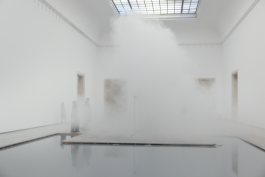
EXH 026 Nebel Leben Fujiko Nakaya 2022
Header image:
Munich Fog (Wave), #10865/I
Haus der Kunst
© Andrea Rossetti
Text: Haus der Kunst
“Fog makes visible things become invisible and invisible things – like wind – become visible”. Fujiko Nakaya
Fujiko Nakaya's fog sculptures are made entirely of water. They challenge traditional notions of sculpture as they change at every moment depending on temperature, wind and atmosphere.
“Fujiko Nakaya. Nebel Leben” is the first comprehensive survey exhibition of the visionary sculptor Fujiko Nakaya (b. 1933, Sapporo, Japan) outside of Japan. Gaining prominence in the 1960s as a member of the New York-based collective Experiments in Arts and Technology (E.A.T.), she became internationally renowned for her immersive fog artworks, which defied traditional conventions of sculpture by generating temporary, borderless transformations that physically engage with the public and give shape to the surrounding environment. Driven by early ecological concerns, Nakaya’s work deals with water and air, mediums that have particular resonance in the face of the climate crisis. From the artist’s early paintings to her fog sculptures, single-channel videos, installations and documentation that reveal Nakaya’s cultural and social references, this experiential exhibition will offer an in-depth survey of one of Japan’s foremost artists.
(...) Nakaya introduces water as both a sculptural element and a metaphor for endless temporal processes to link material realities and media-generated illusions. Her cross-disciplinary approach also becomes evident in the titles of her fog works: the sequence of numbers designates the nearest weather station, whose data informs the preparatory planning of each work.
An entire room situates Nakaya’s work in a multiverse of historical events. It is dedicated to her early environmental awareness and the development of her work integrating aspects of both East Asian and Western art movements. The upstairs gallery delves into the contextualization of her work, showing a selection of educational science films from the Iwanami production company, founded by the artist's father, physicist Ukichiro Nakaya. Alongside the artist’s early paintings and sketches, the room features documents from his research that has significantly influenced Fujiko Nakaya’s approach to the world, its matter and its mediation.
(...) Fujiko Nakaya is a game-changing artist whose practice not only is driven by early ecological concerns, but also stands out from the acknowledged trajectories of both East Asian and Western sculpture. Her work resonates with the history of her country without being subsumed to the movements Gutai and Mono-Ha nor to the Euro-North American lineage of Anti-Form, Process Art and Post-Minimalism.
Blurring the borders of science, art, and technology, Fujiko Nakaya’s work invites us to rethink, by direct physical experience, human entanglement with the environment.
Outside sculpture
Munich Fog (Fogfall) #10865/II
All following images:
© Andrea Rossetti,
Haus der Kunst
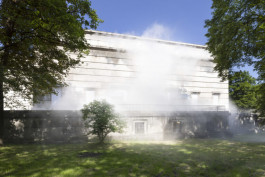
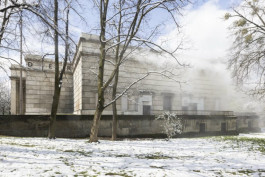
Inside sculpture
Munich Fog (Wave), #10865/I
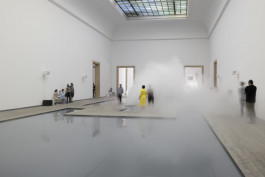
© Fanny Brandauer
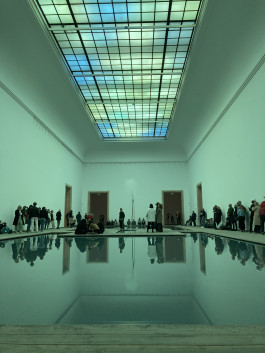
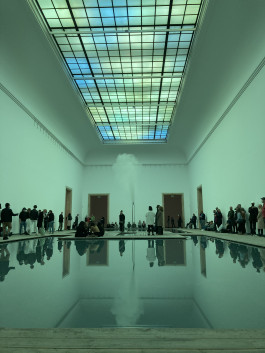
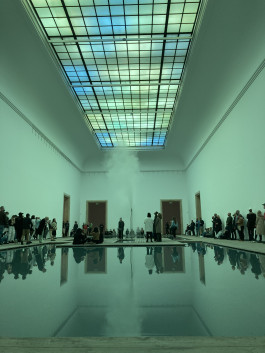
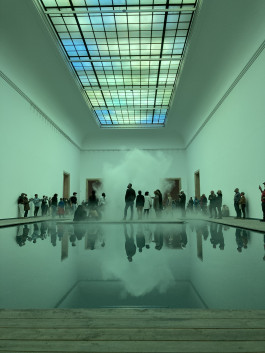
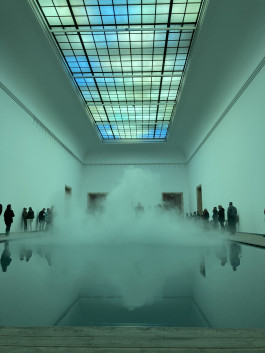
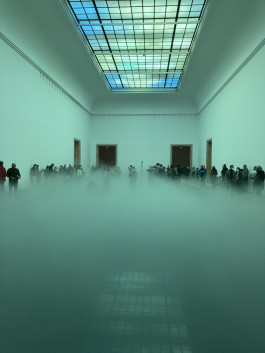
All following images:
© Andrea Rossetti, Haus der Kunst
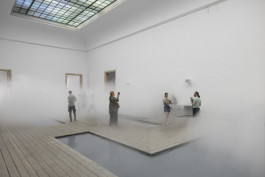
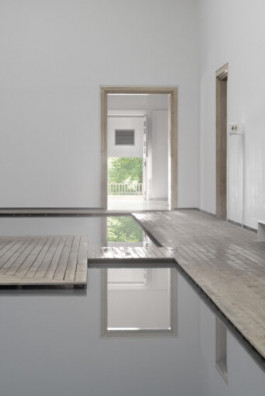
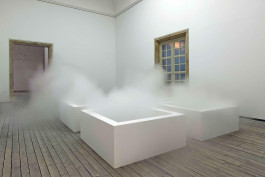
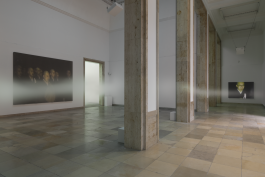
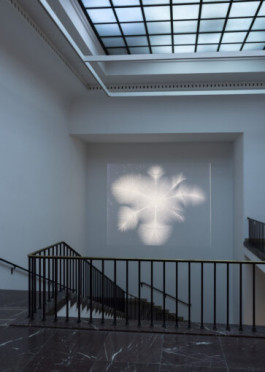
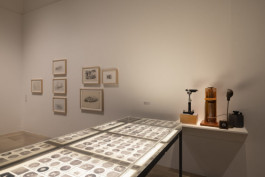
Related Projects
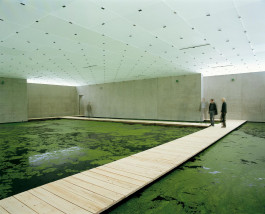
EXH 019 The Mediated Motion Ólafur Elíasson, Günther Vogt 2001
Header image: Kunsthaus Bregenz © Markus Tretter, KUB
Text: Studio Ólafur Elíasson
Responding to Peter Zumthor’s architecture for Kunsthaus Bregenz in Austria, Olafur Eliasson installed, in collaboration with the landscape architect Günther Vogt, a work that spanned all four levels of the building and led the viewer from one landscape situation to another. On the ground floor, visitors first encountered a collection of logs sprouting shiitake mushrooms (Lentinula edodes). Moving to the levels above, they came across a pond with floating duckweed (Lemna minor) on level one, which they could cross via a series of pontoons, and a floor of gently sloping, compressed soil on level two. On the top floor, a suspension bridge spanning a room full of fog terminated abruptly at a blank wall, forcing visitors to return along their original route. A staircase of roughly hewn wood was built on top of the existing concrete stairs, creating an unbroken transition from one landscape situation to the next.
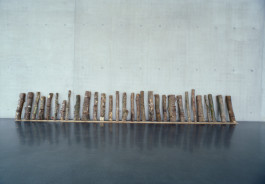
Ground Floor: Shiitake mushrooms on logs
All following images © Markus Tretter
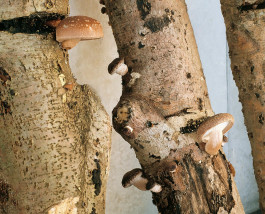
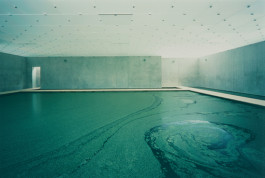
First Floor: Pond with floating duckweed
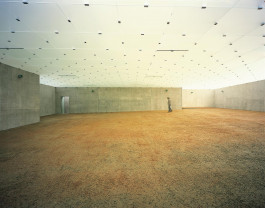
Second Floor: Sloping compressed soil
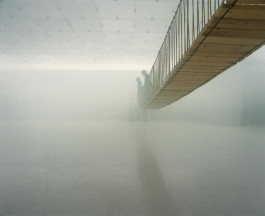
Third Floor: Room with fog and suspension bridge

© Vogt Landschaftsarchitekten
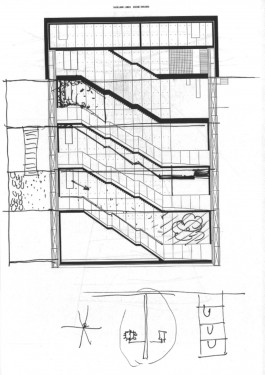
All following drawings © Ólafur Elíasson
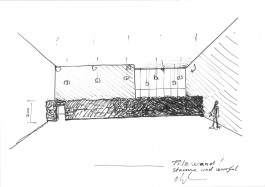
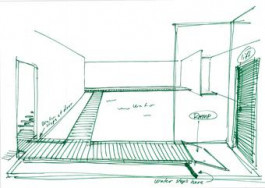
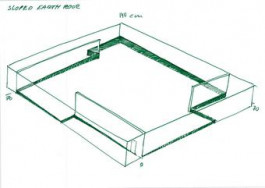
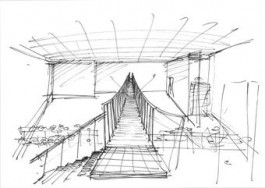
Related Projects



